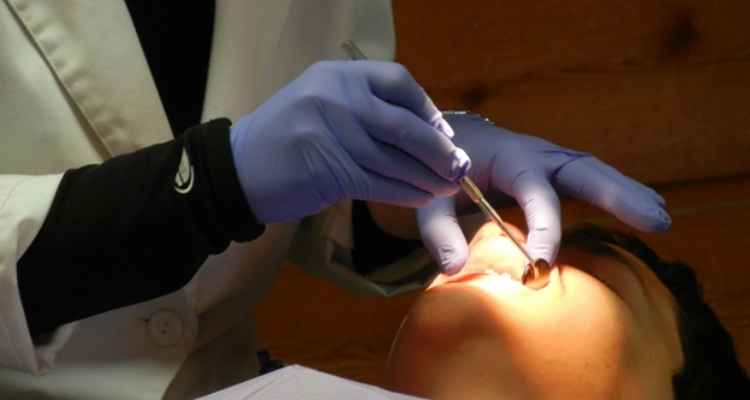The effect of cavities on the tooth can be quite severe. With dental fillings, you can be assured of alleviating pain. We have different types of dental fillings available in the market today. Before filling a tooth, you should know the option most suitable for you. The cost, the size of the cavity, and the material used are important factors to consider. Your Dentist should be the best person to consult because he is in the best position to examine tooth or teeth. With this, he will help proffer a solution to your tooth cavities or decay.
After a chat with your Dentist, below is a highlight of the widely known teeth fillings you can opt for.
Composite Filling
This is a composite resin filling made up of plastic alloys and Ceramics. In appearance, the resin looks like natural teeth. Hence it blends in perfectly. Another name for it is “tooth-color fillings.” This filling aids the proper binding of the tooth and strengthens a cavity plagued tooth.
Advantages of Composite Filling
● It is the same color as the teeth. This will prevent it from being obvious.
● The bond that it forms with the teeth or tooth help to strengthen it.
● It helps to strengthen a tooth that the tooth decay has made weak.
● It does not shake because it bonds to the teeth firmly.
Gold Filling
These are the inlays or outlays made of gold, copper, and different metal alloys. Though expensive, it is the most durable. Fewer dentists now offer gold filling to patients because it is considered too expensive.
Amalgam Filling
Dentists have been using this type of filling for centuries—little wonder why it is a well-known cavity filling material. The filling materials are of high quality. Fixing this type of filling is quite easy, but it will not appear natural like the composite resin filling.
Advantages of Amalgam Filling
● The American Dental Association and the US Food and Drugs Administration are not harmful to the tooth.
Glass Ionomer Filling
This type of filling is bonded to the tooth with chemicals. The fluoride that it releases helps to prevent the tooth from decaying. As a result, they are mostly used for teeth that do not bite and baby teeth.
Advantages of Glass Ionomer Filling
● It possesses a natural look similar to the enamel of the teeth.
● It is best for babies or children whose teeth have just started growing.
● They are used for filling either above or below the gum line.
Porcelain/Ceramic Filling
This filling is almost like the natural teeth. They are often used for the Molar. To use this filling, you do not need to remove a large part of the tooth structure to use this filling.
Advantages of Porcelain/Ceramic Filling
As a result of its strength, it is used to restore the back tooth that can withstand a lot of chewing.
Now that you have prior knowledge about the several fillings options available to you, what next? Choose the best filling option for your oral hygiene.
Porcelain fillings help protect teeth by covering or covering porcelain to prevent tooth decay and help teeth retain their natural strength. Attractive white fillings bring a bright yet natural white color to the teeth. Instead of whitening the patient’s teeth, a simple surgical method is used to fill the tooth with real porcelain. Usually, fillings are done if the patient has caries, tooth decay that requires immediate restoration or extraction.
Filling porcelain teeth for white, healthy teeth
Porcelain fillings are a type of tooth colorant that protects tooth enamel from standard bacteria that destroy it. The sensation maintains and protects teeth and helps them look whiter day after day.
Natural, white fillings are barely visible as they blend well with other teeth and provide the patient with a bright smile after the procedure. Sometimes, it can take a while for a patient’s emotions to return to normal due to the taste of a new substance or seeing a certain way at first. However, such fillings are considered healthier and pose less of a risk for cavities.
Other major benefits of coating porcelain dishes
Genuine porcelain used in dental fixtures is generally very compact and durable porcelain that is harder than your natural tooth enamel. When the porcelain filling fits snugly and adheres to the tooth, the filling can last as long as it sticks to the tooth.
Since porcelain is a highly durable material, it can be matched to almost any shade and even painted in different shades. Porcelain fillings match your natural tooth color so much that they are barely visible.
Unlike other less resilient materials, porcelain vases are not susceptible to shrinkage and expansion under extreme temperatures. Metallic fillings, on the other hand, are known to contract and expand, gradually weakening the entire structure of the target tooth over time. Porcelain filling materials always keep the same shape and size, preserving the integrity of the original tooth.
Porcelain is a popular and popular filling method because it:
- Invisible
- Durable
- Extremely aesthetic
- Chemically stable
High wear resistance, especially when bonded to metal
Due to the unique bonding and assembly process used, it usually lasts 30 years or more

